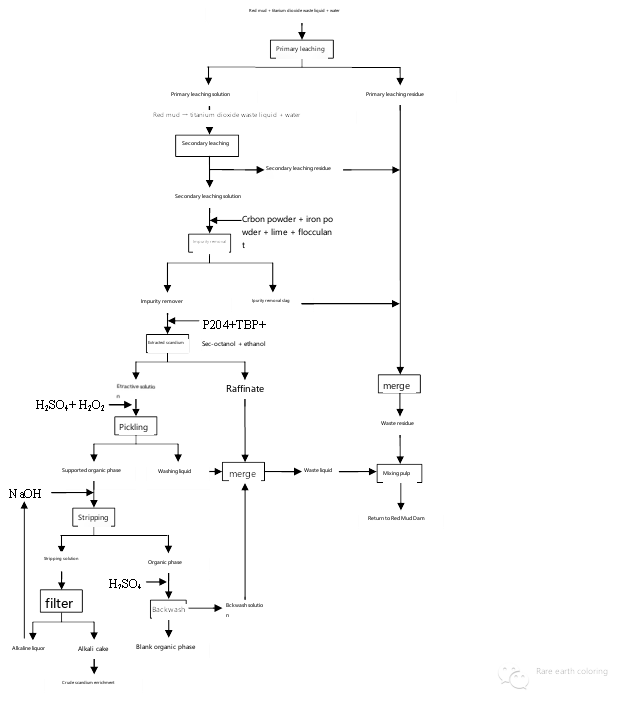Red mud is a very fine particle strong alkaline solid waste produced in the process of producing alumina with bauxite as raw material. For every ton of alumina produced, about 0.8 to 1.5 tons of red mud are produced. Large-scale storage of red mud not only occupies land and wastes resources, but also easily causes environmental pollution and safety hazards. Titanium dioxide waste liquid is the hydrolysis waste liquid produced when titanium dioxide is produced by sulfuric acid method. For every ton of titanium dioxide produced, 8 to 10 tons of waste acid with a concentration of 20% and 50 to 80 m3 of acidic wastewater with a concentration of 2% are produced. It contains a large amount of valuable components such as titanium, aluminum, iron, scandium, and sulfuric acid. Direct discharge not only seriously pollutes the environment, but also causes great economic losses.
Red mud is a strong alkaline solid waste, and titanium dioxide waste liquid is an acidic liquid. After neutralizing the acid and alkali of the two, the valuable elements are comprehensively recycled and utilized, which can not only save production costs, but also improve the grade of valuable elements in waste materials or waste liquids, and is more conducive to the next recovery process. The comprehensive recycling and reuse of the two industrial wastes has certain industrial significance, and the scandium oxide has high value and good economic benefits.
The scandium oxide extraction project from red mud and titanium dioxide waste liquid is of great significance to solving the environmental pollution and safety hazards caused by red mud storage and titanium dioxide waste liquid discharge. It is also an important embodiment of implementing the scientific development concept, changing the economic development mode, developing a circular economy, and building a resource-saving and environmentally friendly society, and has good social benefits.
Post time: Oct-29-2024
